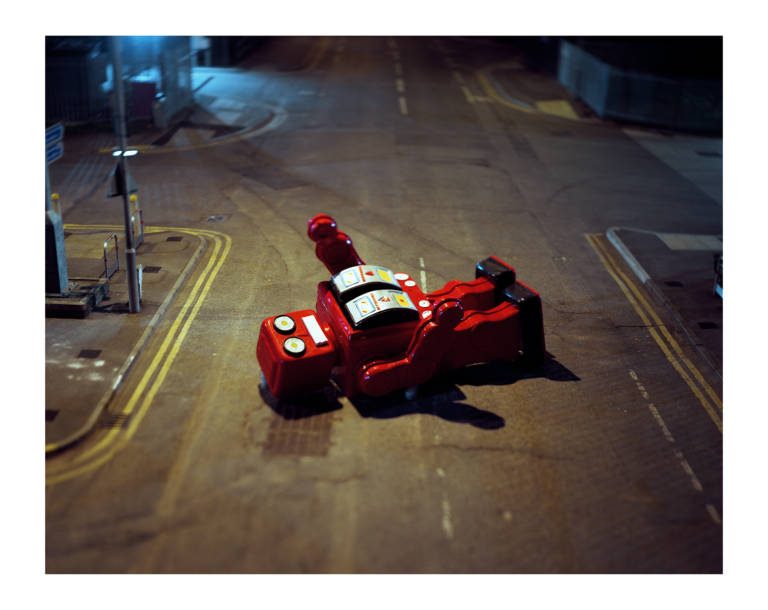
Michael John Hunter
Installations
A careful image-maker, precise photographer, and frequent visitor to film sets, Michael John Hunter’s work encapsulates both worlds, at the intersection of the cinematic and the performative. It was at the University of Edinburgh that Hunter fell in love with the “magical mystery box that is a camera” – later leading him to a career in the film industry. However, Hunter learned the techniques that make up his practice today on his own, while experimenting in wood and other workshops. He spent years developing his approach and perfecting his highly detailed and steps-heavy process. So much so that in the last fifteen years, Michael John Hunter was able to conceive and construct ten unique tableaux.
Michael John Hunter’s photographs are incredible constructed images due to the amount of work that takes place before the prints appear before our eyes. Hunter makes his own large-scale sculptures in locations such as the beach or street, and spends a large amount of time creating the optical illusion on which his entire composition relies. Placing fifteen to twenty foot resin and polystyrene sculptures in our daily environment, Hunter’s work is a play on scale, interrogating the viewer on reception and perception of photography. Playing with perspective and finding the perfect composition is key to his work, especially since his negatives and prints are made on a large 1970s camera. In a gallery context, next to the prints, his props become stand alone sculptures.
Inspired by fatherhood and the wonder of childhood, Hunter invites the viewer to set aside their “adult brain” to reconnect with the joy and amazement of our early years. Hunter’s work is also a commentary on current conversations about facts and the truth on one hand and manipulation and fakes on the other.
More recently, Michael John Hunter has been exploring a new direction for his practice setting aside his lens-based work. Driven by the many challenges of parenthood, Hunter taps into a more visceral part of his lived experience and creates with, on, and against fatherhood, by scaling up his daughter’s school drawings and turning them into his own large canvases.
Selected
artworks






